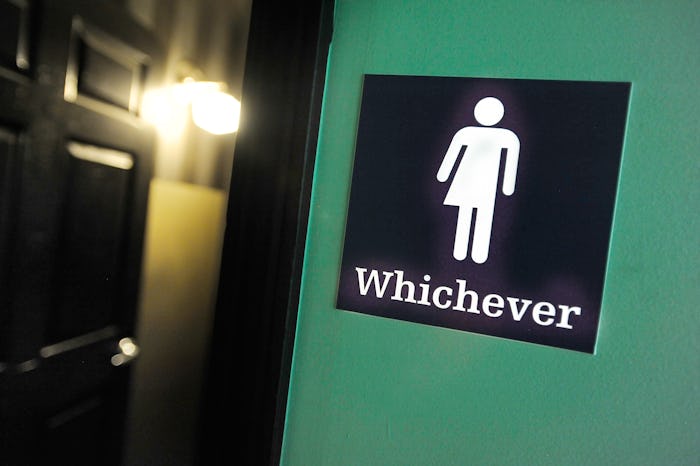Life

Why Obama's School Bathroom Decree Is Necessary
The Trump Administration reportedly has plans to reverse a great deal of work that was started by President Barack Obama and Attorney General Loretta Lynch to protect the rights of transgender youth. At least one major move made by Obama to protect transgender individuals from discrimination at public schools may be reversed by President Trump, even though he had previously implied he intended to leave them untouched. Here's how reversing Obama's transgender bathroom decree would affect kids, because schools have already been trying to weasel their way out of the recommendation.
Last year, one of Obama's last acts as president was to issue a letter to every public school system in the United States with recommendations on how to approach the subject of public restrooms and locker rooms for transgender students. This came in the wake of a series of larger proposals about the protection of transgender rights in the scope of workplace discrimination, many of which had people up in arms.
The Trump Administration said last month that the president intended to keep Obama's protection intact, but new information reported by The Hill indicated that Trump plans to send a letter to public schools undoing the one sent by Obama, making it clear that they have no obligation to honor a transgender individual's right to use the bathroom they are comfortable in. Romper reached out to The White House for comment but has yet to hear back.
Members of the LGBTQ community have long advocated for transgender individuals to have the ability to use the public restroom facility that is in line with their gender identity, rather than their biological sex. A major reason for this is that using restrooms that are not serving the gender the individual identifies with, especially for youth, not only invalidates their identity, but puts them at risk.
In an attempt to curb violence against the transgender community in the public school system, President Obama sent a 25-page letter that instructed schools to allow transgender students to use the restrooms and locker rooms that aligned with their identity. While the letter was not the same as a formal law, it made clear that schools refusing to adhere to the recommendation would be vulnerable to lawsuits and could have their federal funding withheld, according to The New York Times.
Throughout 2016, many states filed injunctions against the legislation aimed at workplace discrimination, and many of those so-called "bathroom bills" are still in limbo. But for students in public schools and colleges throughout the U.S., being allowed to use the restroom in which they feel safest has been a positive step forward. According to The Trevor Project, as many as 40 percent of transgender adults have attempted suicide, and 92 percent of those individuals reported they had tried to commit suicide for the first time before the age of 25.
While many of us take for granted that we can use a public restroom with little more than minor annoyances, for transgender youth in particular these spaces can be difficult to navigate and can make them vulnerable to violence. Many people who experienced bullying as youth know that bathrooms and locker rooms are often favorite places of bullies to strike, because they're away from teachers and are an inherently vulnerable place to corner someone. Even though LGBTQ youth are supposed to be protected under Title IX, which prohibits sex discrimination at work or in school, often times that protection only exists in theory and not practice, in part because schools don't comply and also because youth may be afraid to speak up.
For trans youth, being forced to use a bathroom that isn't in line with their identity isn't just an insult to their identity, but could potentially put their lives at risk: either because of violence enacted against them in those spaces, or the violence they enact against themselves in response to being humiliated, or otherwise made to feel unwelcome, in those and other public spaces. The National Center For Transgender Equality reported that 75 percent of transgender youth feel unsafe at school.
Youth spend so much of their time in school that rescinding that protection would no doubt be devastating not just to students, but parents who are struggling to keep their children safe, whether it be in public, at school, or in their own home.